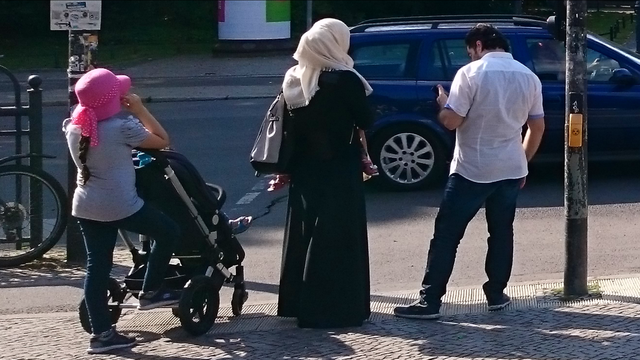
[ad_1]

In Saudi Arabia, for example, the garment is often black. However, the abaya can also come in other colors and feature elaborate decorations.
The French Council of the Muslim Faith argued the abaya was not a religious garment — but instead one tied to Arab culture.
“Unless all long dresses are banned altogether in schools, for students and teachers – regardless of their faith – it will be impossible to apply a measure specifically targeting the abaya without falling into the trap of discrimination and arbitrariness,” the group said.
Olivier Veran, a French government spokesman, argued the abaya was “obviously” a religious garment that’s seen as an act aimed at “proselytizing” people to Islam.
Why a ban?
Gabriel Attal, France’s education minister, said “the abaya has no place in schools” because it attacks on the principle of laicite, the country’s version of secularism that guarantees the neutrality of the state and in public from religious symbols.
“When you enter a classroom, you should not be able to distinguish or identify the students’ religion by looking at them,” Attal told the French TV channel TF1.
Laicite applies to public institutions in a nation with a strong cultural aversion to public expressions of faith. The philosophy comes out of the Enlightenment when during the 18th century a movement arose to reject the Catholic church’s power in schools and other institutions.
“Schools are still an emblematic battlefield,” Anne-Laure Zwilling, an anthropologist at the CNRS, France’s national public research organization, told The New York Times. “Tensions around laicite are stronger there.”
Data reveals that the number of incidents related to laicite reported by school officials have increased over the past year.
The debate in France regarding Islamic symbols has intensified since 2020 when a Chechen refugee beheaded a teacher named Samuel Paty, who had shown students caricatures of the Prophet Mohammed in a Paris suburb.
Five million Muslims currently live in France, which represents about 10% of the country’s overall population. Most hail from the Middle East and Africa.
The ban initiated by Attal, who is close to President Emmanuel Macron, has also caused a political firestorm about the country’s rules and whether they discriminate against the nation’s Muslim minority. Far-right lawmakers and some on the left applauded the move after many had argued in recent years on banning all religious symbols to also include universities and public outings tied to schools.
“This type of policy stands in opposition to the liberal core of the 1905 Law on Separation of Church and State, a law we’ve been distorting and weaponizing since the ‘90s,” said Rim-Sarah Alouane, a French legal scholar and commentator. “Such policies fuel the nation’s fractures.”
[ad_2]
Source link